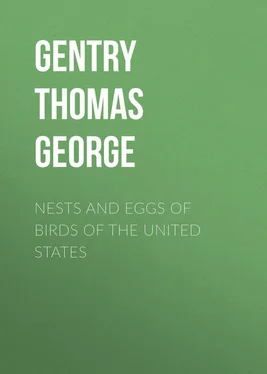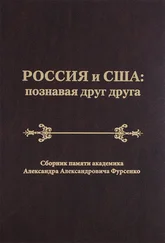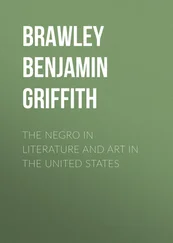Thomas Gentry - Nests and Eggs of Birds of The United States
Здесь есть возможность читать онлайн «Thomas Gentry - Nests and Eggs of Birds of The United States» — ознакомительный отрывок электронной книги совершенно бесплатно, а после прочтения отрывка купить полную версию. В некоторых случаях можно слушать аудио, скачать через торрент в формате fb2 и присутствует краткое содержание. Жанр: foreign_antique, foreign_prose, на английском языке. Описание произведения, (предисловие) а так же отзывы посетителей доступны на портале библиотеки ЛибКат.
- Название:Nests and Eggs of Birds of The United States
- Автор:
- Жанр:
- Год:неизвестен
- ISBN:нет данных
- Рейтинг книги:5 / 5. Голосов: 1
-
Избранное:Добавить в избранное
- Отзывы:
-
Ваша оценка:
- 100
- 1
- 2
- 3
- 4
- 5
Nests and Eggs of Birds of The United States: краткое содержание, описание и аннотация
Предлагаем к чтению аннотацию, описание, краткое содержание или предисловие (зависит от того, что написал сам автор книги «Nests and Eggs of Birds of The United States»). Если вы не нашли необходимую информацию о книге — напишите в комментариях, мы постараемся отыскать её.
Nests and Eggs of Birds of The United States — читать онлайн ознакомительный отрывок
Ниже представлен текст книги, разбитый по страницам. Система сохранения места последней прочитанной страницы, позволяет с удобством читать онлайн бесплатно книгу «Nests and Eggs of Birds of The United States», без необходимости каждый раз заново искать на чём Вы остановились. Поставьте закладку, и сможете в любой момент перейти на страницу, на которой закончили чтение.
Интервал:
Закладка:
Nidification ordinarily commences about the 18th of May. The nest is placed in various positions – sometimes 011 a horizontal limb, occasionally in a crotch, but generally among the branches of the bush upon which it reposes. The materials of composition are as varied as they are numerous. In thickets, and also in places removed from human habitations, a platform of dried leaves, slender sticks, or weeds is used as a basis, on which is reared a superstructure of small twigs, fine roots, herbaceous plants, bits of straws, pine needles, and other materials which are common to such situations. But when a nest is built in close proximity to the home of man, bits of string, strands of silk or thread, and bunches of cotton or wool are appropriated, and made to do excellent service.
From the foregoing remarks it is obvious that nests vary according to changes in the environment . Hence, what is typical in one locality might be deemed but a deviation from the normal form, when compared with a nest of the same species found in an entirely different neighborhood, and vice versa . Mr. Ingersoll describes a nest found near Norwich, Connecticut, which was suspended between two small bushes in such a manner that it had no other support than that afforded by a slender spray from each bush; but the large mass of crooked sticks below offered so many hooked ends and projections that the nest was very secure. The writer describes elsewhere a nest that was carelessly made, and bearing a close resemblance to the structure of the Maryland Yellow-throat, which he supposed to be the work of young or indolent birds. Another, on the contrary, showed superior workmanship. The outside of this cosy and beautiful nest was composed of wool, raw cotton, strings, fragments of lamp-wick, a slight intermixture of tangled silk, fragments of lichens, etc., held in situ by strands of silk. Upon this basis was built a superstructure of fine rootlets, intermingled with patches of wool.
The nest which we have figured in the Plate was found in the vicinity of Philadelphia, Pa., in the summer of 1876. It is represented the usual size, and shown in its natural position upon a cluster of blackberry branches. Exteriorly, it is formed of wrapping string, bits of thread, fine roots, cotton ravelings, a few grayish lichens, and bunches of discolored raw cotton in great quantities. Interiorly, there is a lining of slender grass stems, which monotony is relieved in a measure by a piece of lamp-wick. The external diameter is five inches, and the height about two and a half. The cavity is three and a half inches, and the depth an inch and a half.
Such facts as are detailed above, with innumerable others of a similar nature that might be adduced, most abundantly and conclusively prove that birds are not the dull, senseless, routine-loving creatures which those who have some pre-conceived opinion to uphold, or cherished theory to sustain, are wont to argue. Though many of their actions are purely instinctive or mechanical, yet evidence is not wanting to show that they are gifted with a faculty similar in character to that possessed by man, but differing in degree. A thousand circumstances justify the belief that they often reason a priori from cause to consequences, providently managing with a constant aim for future comfort, convenience and necessity. Instinct is always the same thing, never advancing, never retrograding. Reason tends to improvement, always seeking a higher plane of existence. To say that changes in nest-building imply a change of instinct , is to perplex the understanding by a perversion of language; but to ascribe them to the operations of reason, influenced by motives, seems to be the most rational view to take of the matter.
The nest being completed, which is usually the case in about five days from the time of starting, a brief season elapses before any eggs are laid. In the Northern States this happens about the third week of May, and then only one is deposited each day, for four or five days. The necessary complement being laid, the female immediately takes the nest, and incubation follows. This is her exclusive task for a period of twelve or thirteen days. While she is thus engaged, the male stations himself close-by the nest, only departing therefrom in quest of food for himself and partner. Should an enemy approach, he assails the intruder with commendable fearlessness and boldness. Various snakes, particularly the black-snake, are their inveterate foes. When an attack is made by one of these wily creatures, both parents, heedless of danger, often fly so close to the assailant as to lose their lives in efforts to prevent the nest being ravished and despoiled. But in the case of human depredators, knowing that resistance would be futile, they seek to deter them from any contemplated sacrilege by the most discordant cries and frantic gestures.
The young are objects of tenderest solicitude. Both parents vie with each other in rendering them every needed service. While one is absent from home in search of food for their rapacious appetites, the other is guarding the nest and its precious charges with the most jealous care. Earthworms, spiders, flies, caterpillars of non-irritating properties, together with such berries as the season affords, are collected in vast quantities, and fed to these helpless creatures. But as they increase in size and age, other articles are added to their voluminous bill of fare. In about twelve days from the time of hatching, the young are able to quit the nest, and in six days more, are ready to be initiated into the mysteries of flight. This important duty devolves exclusively upon the male parent.
The eggs are oval in form, of a dark emerald green color, very highly polished, and measure .97 of an inch in length, and .68 in width. There is small chance of confounding this with any other American bird's eggs – certainly after a specimen has been once seen. Dr. Abbott, as quoted by Ernest Ingersoll, once discovered a nest, at Trenton, N. J., that contained purely white eggs, which hatched in due time into perfect young. Similar instances are known in the case of other species laying dark eggs, where one or two white examples have been found among others of the normal color in the same nest-complement. But a single brood is positively known to be raised, although cases have come under our observation of nests with fresh eggs as late as the 15th of August – possibly the work of birds whose early efforts had been frustrated by enemies, or by some accident.
Plate IV. – ICTERUS SPURIUS, Bonaparte. – Orchard Oriole
The Orchard Oriole is quite abundant throughout most of the United States, from the Atlantic to the Missouri Valley, and on the southwest to the valley of the Rio Grande. Individuals have been met with by Mr. J. A. Allen as far west as the base of the Rocky Mountains, in Colorado, the extreme limit of its western range. It is probable that it breeds throughout the entire area of its distribution – sparingly, however, in New England, according to eminent authority; but quite freely in the Central States, from New York to South Carolina, and thence south-west to Texas.
The period of its arrival in the United States from the genial clime of Guatemala, where it winters, has been fixed by Mr. Dresser, who has carefully studied its nesting-habits in Texas, as early as the first or second week of April. But, farther north, its presence is not observed before the last week of April, or the beginning of May.
Unlike the Warblers and Thrushes, which prefer secluded localities, the subject of our sketch delights in cultivated grounds, particularly where the apple and the pear abound. Here it takes up its quarters, accomplishes the object of its mission, and thence retires to its distant winter-home. Occasionally, a few individuals are to be found in waste grounds, dense thickets, or along the borders of woods, but such cases are exceptional, and conditioned only by the close proximity of some time-honored orchard.
Читать дальшеИнтервал:
Закладка:
Похожие книги на «Nests and Eggs of Birds of The United States»
Представляем Вашему вниманию похожие книги на «Nests and Eggs of Birds of The United States» списком для выбора. Мы отобрали схожую по названию и смыслу литературу в надежде предоставить читателям больше вариантов отыскать новые, интересные, ещё непрочитанные произведения.
Обсуждение, отзывы о книге «Nests and Eggs of Birds of The United States» и просто собственные мнения читателей. Оставьте ваши комментарии, напишите, что Вы думаете о произведении, его смысле или главных героях. Укажите что конкретно понравилось, а что нет, и почему Вы так считаете.












